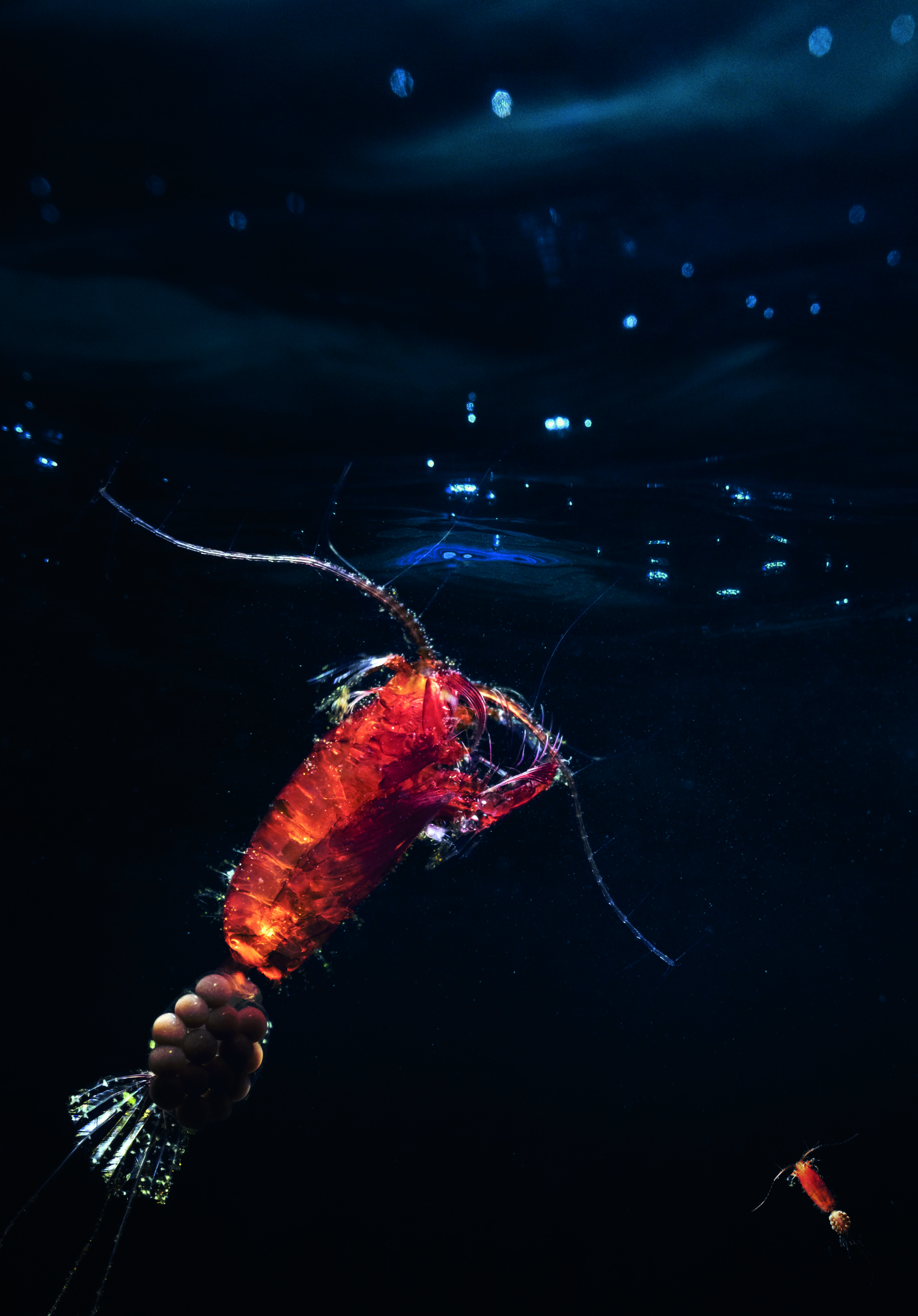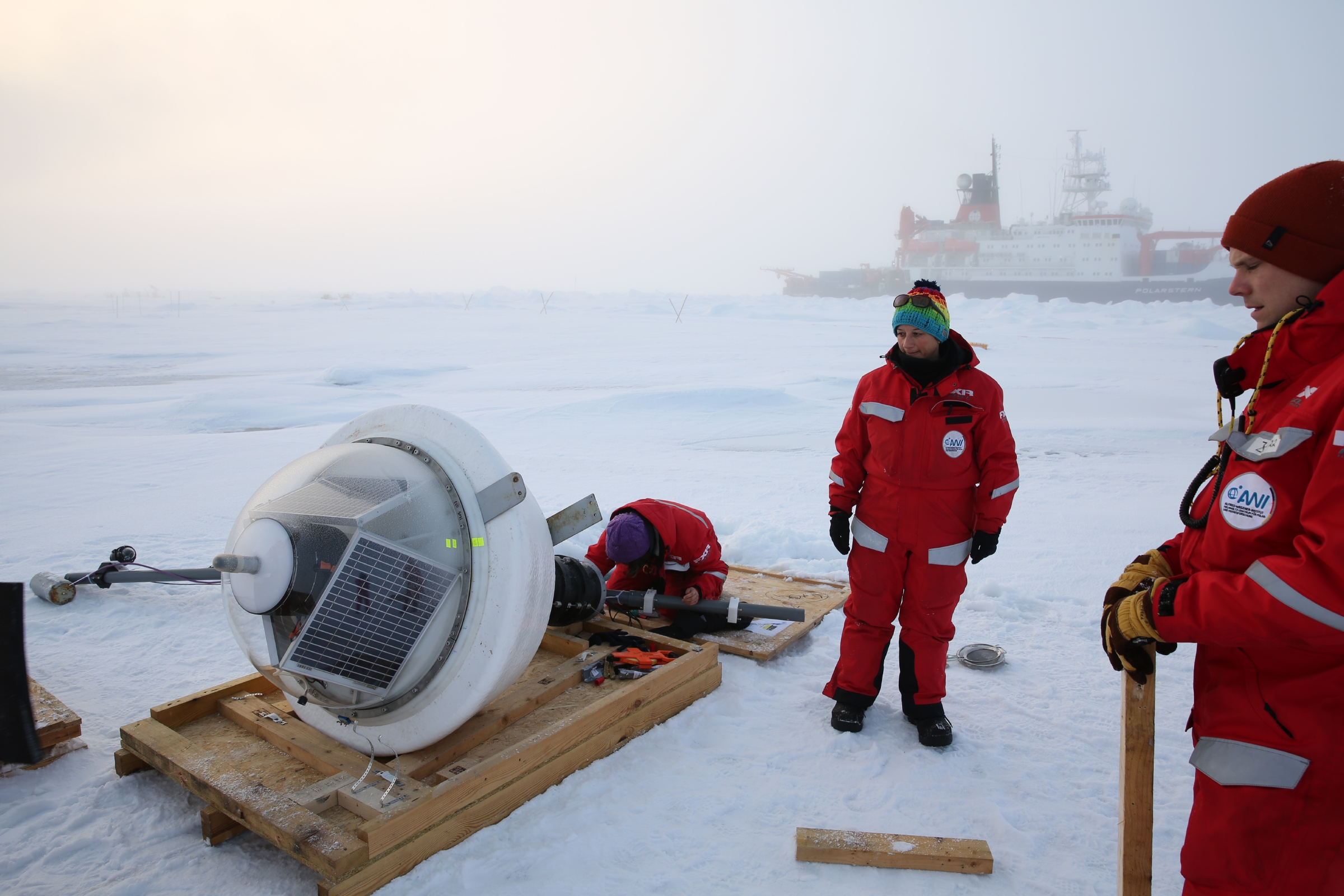Retreating sea ice keeps zooplankton in the depths
Climate change is affecting the vertical migration of zooplankton in the Arctic, with potential implications for the entire Arctic ecosystem, finds a new study, published today in Nature Climate Change.
As the Earth’s climate warms, the extent and thickness of Arctic sea ice are declining; researchers predict that the Arctic Ocean could see its first ice-free summer as early as 2030. As a result, sunlight is reaching deeper into the ocean, affecting the migration patterns of zooplankton – tiny creatures such as krill – which move up and down the water column in response to changing light levels.
The tiny creatures typically prefer twilight conditions and stay below a certain light intensity – known as critical irradiance. As the sunlight changes throughout the day, or season, the zooplankton move up or down within the water column to their preferred light conditions.

Alfred-Wegener-Institut / Mario Hoppmann
In the polar regions, zooplankton follow a seasonal migration cycle, remaining in the deep, darker waters during the summer and rising to the surface waters during the winter.
Little is known about the migration under the sea ice – an important factor for the zooplankton because the microalgae which grows in the ice is an important food source for the tiny creatures, particularly during the winter.
To understand more about migration in this important habitat, an international team of researchers, including scientists from British Antarctic Survey, designed and built an autonomous biophysical observatory – essentially a floating buoy. Moored below the ice for several months, the instrument collected continuous measurements of light intensity below the ice, and zooplankton movement.

The researchers identified a critical irradiance for the zooplankton and then used models which simulate future sea-ice conditions to predict how the timing of the migration, controlled by light levels, could change over time under a range of different climate scenarios.
Dr Gaëlle Veyssière, a sea ice physicist at British Antarctic Survey, and co-author of the paper, says:
“As you might expect, as the sea ice gets thinner, more sunlight will reach the upper ocean, with zooplankton migrating to depths earlier and earlier in the year and they won’t return to the surface waters until later and later in the year. This means zooplankton will stay in deeper waters for increasing periods of time.”
This could have important implications on the amount of food and when it will be available to the zooplankton.
Dr Hauke Flores, co-author of the study, says:
“In warmer future climates, the sea ice will form later in the autumn, reducing the amount of algae produced in the ice. This, combined with their delayed rise to the surface, could lead to food shortages for the zooplankton.”
He adds:
“Overall, our study points to a previously overlooked mechanism that could further reduce Arctic zooplankton’s chances of survival in the near future.”
If food shortages lead to declining populations of zooplankton, this could have catastrophic consequences for larger animals such as seals and whales.
However, the researchers highlight that the impact on vertical migration will be much less pronounced if climate change is limited to 1.5 degrees.
“Sea-ice decline could keep zooplankton deeper for longer” by Flores. H., Veyssière, G., et al is published in Nature Climate Change.